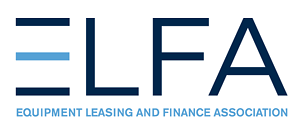Commercial Truck Sales
AlixPartners 2014 Heavy Equipment Outlook: Commercial Vehicles provide a comprehensive study of industry outlook as well as insights into areas ripe for growth. Despite the challenges of recession, emerging market competition, and ongoing environmental regulations, heavy duty commercial truck sales will lead the expected global compound annual growth rate (CAGR) of 5.4% through 2016, as opposed to medium duty vehicles. Most of the growth will come from emerging markets such as India and China, according to the AlixPartners study, with North America’s less brisk CAGR forecast at 2.3% through 2016. Although sales growth tends to follow GDP, certain commercial truck application markets are forecasted to experience faster than average economic growth in 2014; such as construction, utilities, telecoms and equipment leasing sectors. Kenny Vieth, partner, Americas Commercial Transportation (ACT) Research Co. stated that heavy-duty truck sales are expected to surge to 300,900 units in 2014; medium-duty truck sales are projected to experience continued growth to 213,700 units in 2014. He believes the increase in sales will be related to a combination of factors including new home construction, domestic energy production, and the inevitable replacement of aging fleet vehicles. The AlixPartners study points to four avenues for expanded sales and growth:
- Excelling in emerging markets by tailoring business, manufacturing, and distribution strategies in addition to developing country specific offerings and joint ventures.
- Optimizing development and production costs to protect profit margin while delivering reliability, fuel efficiency, and low total cost of ownership
- Managing the supply chain strategically to avoid oversupply, stock outs, or financial risk
- Investing in emissions reduction, fuel and energy efficiency improvements to meet ever tightening environmental regulations
Overall, commercial truck sales are projected to be better than in 2013 and solid through 2015.
Diesel Prices 2014
According to the U.S. Energy Information Administration (EIA), the projection for the average on-highway retail price of diesel fuel in 2014 is $3.73, based on the latest mid-November revision down from the previous projection of $3.76 per gallon. In late November, diesel gains registered at $3.844 per gallon the first uptick since September, and following the EIA report of the 4th straight week of a decline in average diesel fuel prices by 1 cent to $3.822 per gallon, following decreases of 2.5 cents, 1.3 cents, and 1.6 cents, respectively over the previous three weeks. This was the lowest level since the week of July 1, when average diesel prices averaged $3.817 per gallon. These figures demonstrate a continuation of diesel fuel prices that have been dropping since 2012 when diesel averaged $3.97 a gallon. 2013 averages were recently revised to correct for a larger than expected decrease, from the projected September forecast of an average of $3.96 a gallon to October’s projection of $3.93 a gallon.
Declining gasoline prices are collectively believed by industry experts to be due to declining crude oil prices, with the average price of crude oil on the New York Mercantile Exchange at $92.75 as of late November 2014. Accompanying factors include the increase of oil production in non OPEC countries, as well as the introduction of fracking in North America, producing as much as 2-3 million barrels per day. Less unrest in the Middle East, ongoing fears of recession, debt ceiling decisions in 2014, and a tapering of fiscal stimulus may also contribute to lower fuel prices in 2014.
CARB Compliance on Commercial Trucks in CA
On December 12, 2008, the California Air Resources Board (CARB) approved the Truck and Bus regulation to significantly reduce particulate matter, or PM, and oxides of nitrogen emissions from existing diesel vehicles operating in California. The regulation applies to nearly all diesel fueled trucks and buses with a gross vehicle weight rating (GVWR) greater than 14,000 pounds that are privately or federally owned and for privately and publicly owned school buses. As owner operators head into 2014, compliance deadlines will greet them bright and early on New Year’s Day, necessitating replacing their truck or retrofitting by January 1st, 2014 to stay in compliance. According to a CARB fact sheet, this specific compliance date applies to heavy trucks and buses over 26,000 lbs. with 2005-06 engine model year diesel GVWR, required to have a PM filter installed through 2022, at which point a 2010 engine model year would be required. By 2023 all trucks and buses must have 2010 model year engines with few exceptions. Fleets that report and use the phase-in option for heavier trucks could take advantage of remaining credits to delay requirements for other heavier trucks in the fleet until 2017 by adding fuel-efficient hybrids or alternative fueled engines to the fleet. All fleets could make any vehicle equipped with a PM filter prior to 2014 compliant until 2020, or could make all heavier vehicles in the fleet exempt from meeting the replacement requirements until 2023 if all heavier trucks in the fleet are equipped with PM filters prior to 2014. Fleets would need to report by January 31, 2014 to take advantage. Vehicles operated less than 1000 miles per year can also be exempt from the general requirements but must be reported in the compliance year. A mid-November publication by CARB “Advisory on Good Faith Efforts and Expected Regulatory Changes” provides important information on several alternative options for compliance. For the most updated information visit he California Air Resources Board Truck and Bus Regulation website
Freight Projections and Forecast
Every freight transportation industry projection must be considered within the context of global, national, and local economies. Although The World Bank downgraded the forecast for global growth in the latest biannual Global Economic Prospects, the US economy and unemployment are slowly recovering from recession which should bring positive growth in 2014. 2013 was a year of new technologies in the freight transportation industry, some spurred by innovation and others by regulation. 2014 will no doubt continue to be a year of ongoing technology developments in areas such as freight brokerage business, freight portals, LTL density calculations and beyond. The American Trucking Associations latest edition of U.S. Freight Forecast to 2024 projects an overall increase in freight volumes for all modes of more than 20% and an increase in the amount of that freight moved by trucks. Kenny Vieth, president of American Central Transport (ACT), reported that demand for new Class 8 equipment should rise about 15% in 2014, projecting North American production at 298,000 units, up from 2013’s expected total of 261,100, due to market growth and replacing of aged equipment. Eric Starks, president of FTR Consulting, Freight Analysis and Forecasting predicts truck sales for all of North America will hit 243,000 this year, rising to 262,000 next year and to 275,000 in 2015; owing to replacing and expanding of fleets, cost-saving fuel efficient equipment, and based on an expected 2.6% growth in U.S. gross domestic product. Additional factors adding to growth may prove to be a slight deficit decrease, with increases in consumer confidence, housing starts, and manufacturing.
Expected Industry Growth
There is no doubt that the trucking industry had experienced challenges in recent years, due to the interwoven effects of the recession and economy. Still, there are plenty of facts that point to multiple areas of projected growth heading into 2014. Labor market experts are projecting growth of 1.1 million jobs just in the material moving occupations sector through 2014, creating a dearth of qualified workers in a field commonly plagued with retention issues. FTR Associates Senior Consultant Bill Witte predicted an output growth of 3.1% for 2014. Standard and Poor’s transportation outlook report calls 2014 growth “tepid”, although with a balancing of supply and demand due to smaller carrier bankruptcies and scaling back of larger fleets. In addition, the report cites the industries historical ties to GDP, and ever tightening regulations by the Federal Motor Carrier Safety Administration's Compliance Safety and Accountability (CSA) Program, that restrict the amount of qualified drivers. Bob Costello, ATA’s chief economist stated, “The market is very choppy”. Costello projects the market is likely to change when there are two or three consecutive quarters of economic growth above 3%, stimulating more demand. Holiday sales projections released by Deloitte LLC’s Retail & Distribution practice predict holiday sales between November and January 2014 to climb to between $963billion and $967 billion, representing a 4% to 4.5% increase. The consensus among industry experts is that the 2014 trucking industry outlook is one of cautious optimism; most certainly gains on 2013, and pockets of growth within a tightened capacity market.
Categories
Get A Quote Today!
* On approved credit






